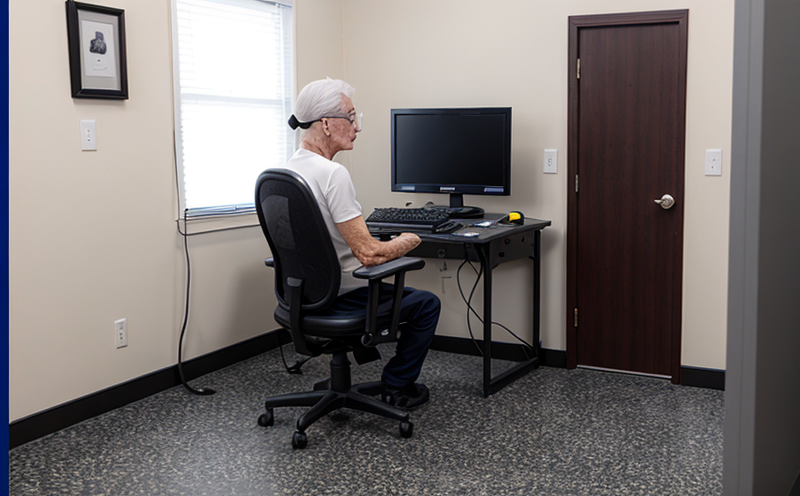ISO 11393 Testing of cut resistance in protective textiles
The ISO 11393 standard is a crucial tool for evaluating the cut resistance properties of materials used in protective textiles, particularly those intended to safeguard workers from sharp and cutting hazards. This test method assesses how effectively a material resists being severed by a blade with defined characteristics, simulating real-world conditions that workers might encounter.
Protective textiles are vital components in personal protective equipment (PPE) designed for industries such as healthcare, construction, and manufacturing. The cut resistance of these fabrics is critical to ensuring the safety and well-being of personnel exposed to dangerous environments. ISO 11393 provides a standardized approach to measure this property, allowing manufacturers and employers to verify that their products meet or exceed regulatory standards.
The test involves using a sharp blade to attempt to cut through a specified area of fabric. The force required to achieve this is measured in newtons (N), with higher values indicating greater cut resistance. This method ensures consistency across different laboratories, enabling reliable and reproducible results.
Understanding the nuances of ISO 11393 testing involves knowledge of the blade type used, which can vary based on the material being tested. For instance, stiffer blades are suitable for thick or rugged fabrics, while softer blades may be more appropriate for thin materials. The fabric is cut from a sample that has been prepared according to specific guidelines outlined in ISO 11393.
The test setup includes a testing machine capable of applying consistent forces and measuring the resistance at which the blade cuts through the material. The specimen is placed between two anvils, one stationary and one moving, over which the blade passes. The force required to cut through the fabric is recorded as the critical force point.
Once the test parameters are established, rigorous adherence to ISO 11393 ensures accurate results. This includes precise control of environmental conditions such as temperature and humidity, which can affect the material's performance. Specimen preparation must also be handled with care, ensuring that any pre-treatment does not compromise the integrity of the sample.
The results are typically reported in terms of the critical force required to cut through the fabric. This value is compared against industry standards or specific client requirements to determine compliance. High-force values indicate superior cut resistance, which can be a significant factor in selecting protective textiles for various applications.
Understanding ISO 11393 testing is essential not only for manufacturers but also for quality managers and compliance officers who oversee the production of PPE. By ensuring that their products meet or exceed these standards, they contribute to enhancing worker safety across numerous sectors.
Scope and Methodology
The ISO 11393 standard provides a detailed protocol for testing the cut resistance of protective textiles. The scope includes materials that are intended to be used in protective clothing, gloves, or any other item designed to protect against sharp cutting hazards.
- Testing Parameters: Force required to cut through fabric in newtons (N).
- Blade Characteristics: Blade type and material influence the test outcome. Typically, a defined blade is used for consistent results.
- Specimen Preparation: Samples are prepared according to ISO 11393 guidelines, ensuring uniformity in testing.
The methodology involves setting up the test rig, positioning the specimen between the anvils, and applying force until the blade cuts through. The critical force at which this occurs is recorded as a measure of cut resistance.
It's important to note that ISO 11393 testing can be tailored for different types of fabrics depending on their intended use. For instance, thicker materials might require higher forces to demonstrate adequate cut resistance compared to thinner materials.
Benefits
- Enhanced Worker Safety: By ensuring that protective textiles meet stringent cut resistance standards, the risk of injury is significantly reduced.
- Regulatory Compliance: ISO 11393 testing helps manufacturers and suppliers comply with international safety regulations.
- Consistent Quality: Standardized testing ensures that every batch of protective textiles meets the same high standards, maintaining consistent performance across all products.
- Improved Product Design: The insights gained from ISO 11393 testing can inform product development and improve overall design for better cut resistance.
The benefits extend beyond safety and compliance to include improved reputation among clients and stakeholders. Companies that adhere to these standards are seen as leaders in worker protection, which can enhance their market position.
Customer Impact and Satisfaction
- Satisfied Clients: Compliance with ISO 11393 testing ensures that products meet or exceed client expectations, leading to higher levels of customer satisfaction.
- Increased Productivity: By minimizing the risk of injury, ISO 11393 testing supports a more productive workforce. Workers are less likely to be taken out of service due to accidents.
- Enhanced Reputation: Brands that demonstrate a commitment to worker safety through rigorous testing enjoy enhanced reputations among consumers and industry peers.
The impact on customers is not limited to direct benefits but also includes the broader societal good. By reducing workplace injuries, ISO 11393 testing contributes to a safer working environment for all.





